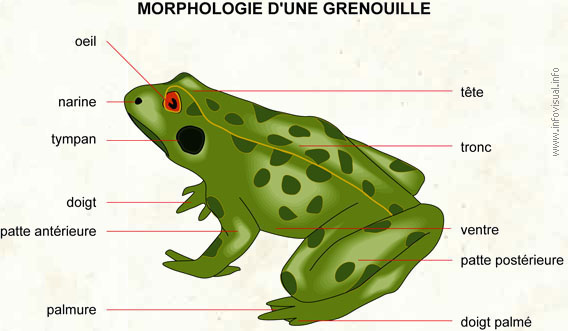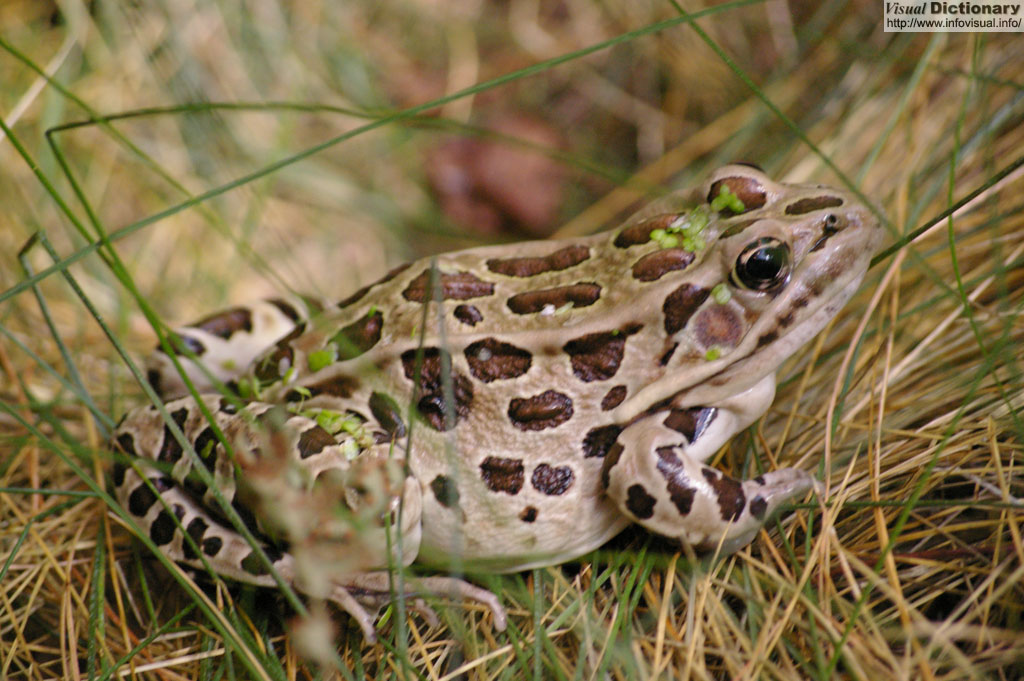Grenouille

Tête: partie supérieure de la grenouille.
Tronc: partie centrale de la grenouille à laquelle sont rattachés les membres et la tête.
Ventre: partie inférieure du tronc.
Patte postérieure: membre arrière de la grenouille.
Doigt palmé: un des appendices articulés qui sont rattachés ensemble par une peau mince.
Palmure: peau mince rattachant les doigts ensemble.
Patte antérieure: membre avant de la grenouille.
Doigt: appendice articulé de la patte antérieure.
Tympan: organe de l'ouïe de la grenouille.
Narine: entrée du système respiratoire de la grenouille.
Oeil: organe visuel de la grenouille.
Photo :

Amphibians, class Amphibia, such as frogs, toads, salamandesr, newts, and gymnophiona, are cold-blooded animals that metamorphose from a juvenile, water-breathing form to an adult, air-breathing form. Typically, amphibians have four limbs. Unlike other land animals (amniotes), amphibians lay eggs in water, as their fish ancestors did. Amphibians are superficially similar to reptiles. For the purpose of reproduction most amphibians are bound to have fresh water. A few tolerate brackish water, but there are no true seawater amphibians. Several hundred frog species in adaptive radiations, however, do not need any water whatsoever. They reproduce via direct development, an ecological and evolutionary adaptation that has allowed them to be completely independent from free-standing water. Almost all of these frogs live in wet tropical rainforests and their eggs hatch directly into miniature versions of the adult, passing through the tadpole stage within the egg. Several species have also adapted to arid and semi-arid environments, but most of them still need water to lay their eggs. Symbiosis with single celled algae that lives in the jelly-like layer of the eggs has evolved several times. The larvae breathe with exterior gills. After hatching, they start to transform gradually into the adult's appearance. This process is called metamorphosis. Typically, the animals then leave the water and become terrestrial adults, but there are many interesting exceptions to this general way of reproduction.
Animation : Ouaouaron - Lithobates catesbeianus
Merci à YouTube de nous permettre d'observer ce vidéo.
Objet virtuel : Ouaouaron - Lithobates catesbeianus
Merci à YouTube de nous permettre d'observer ce vidéo.